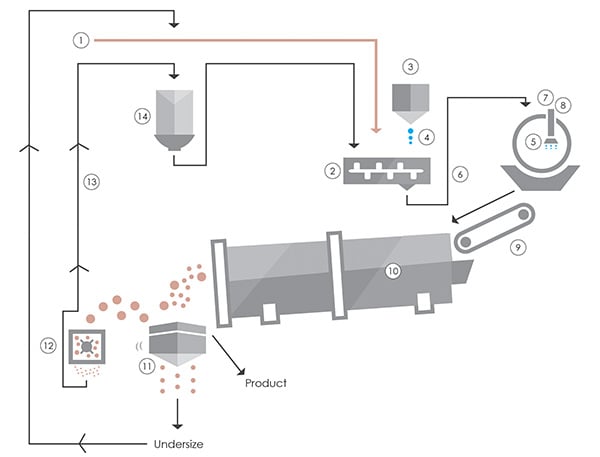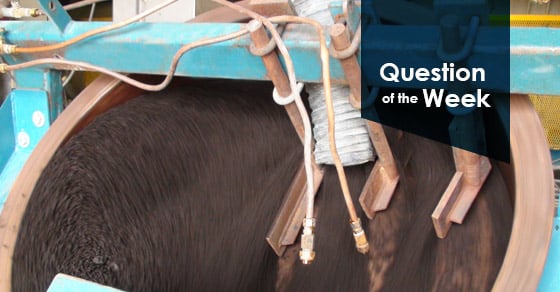Pelletization is an agglomeration process whereby material fines are “grown” through a tumbling motion in the presence of a liquid binder or water. While all agglomeration processes can be customized to suit the unique needs of the material being processed, in general, it follows these sequential steps:
1) Material fines can be pre-conditioned in a pin or paddle mixer. Not all pelletizing processes use a pre-conditioning step, but those that do see added benefits such as reduced binder use, increased production, and an improved end product.
2) After pre-conditioning, the material moves on to the disc pelletizer. For those that do not pre-condition, this is where the pelletization process begins. Here, material is continually fed to the disc pelletizer and wetted by a liquid binder spray.
The disc’s rotation causes the wetted fines to form small, seed-type particles (nucleation). The seed particles “snowball” by coalescence into larger particles until they reach their desired size and exit the pan. When a pre-conditioning step is used, seed pellets form in the mixer, and are enlarged and further rounded and refined on the disc pelletizer.
3) Finally, a belt conveyor transports the pellets to a rotary dryer if moisture removal is necessary. While reducing the moisture content, the dryer can also polish pellets into their final, hardened form.
Please see the flow diagram below for a visual representation of the pelletization process:

- Raw Feed
- Paddle/Pin Mixer
- Binder Feed
- Spray Rate
- Disc Pelletizer
- Feed Onto Pelletizer
- Binder Feed
- Liquid Spray System
- Transfer Conveyor
- Rotary Dryer
- Vibrating Screen
- Oversize Mill
- Recycle
- Surge Hopper
For more information on pelletization, contact us today!

